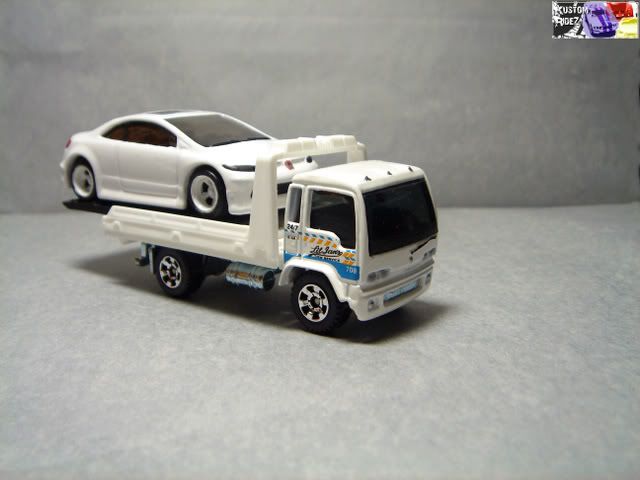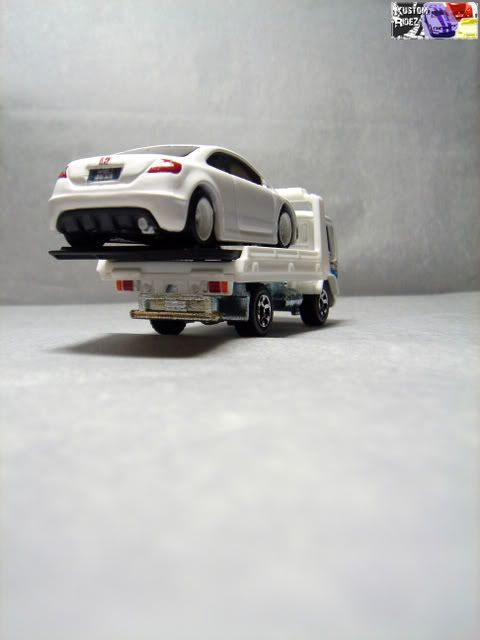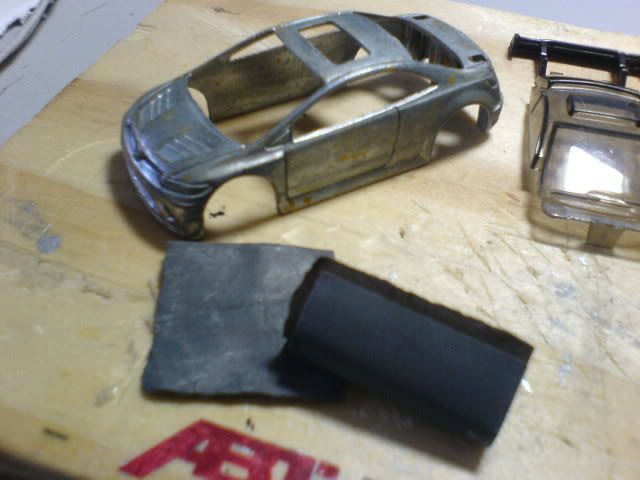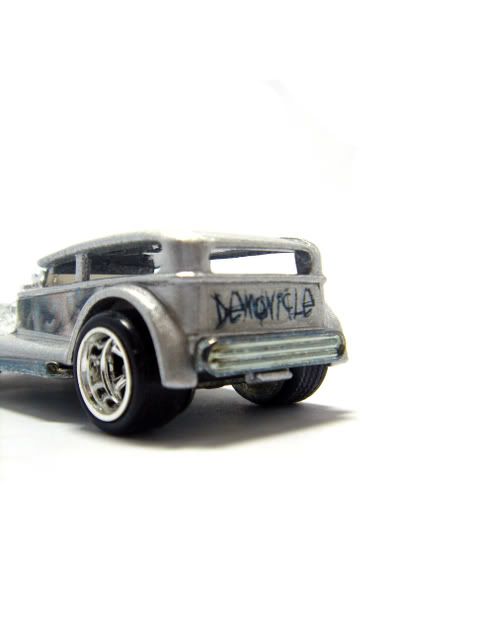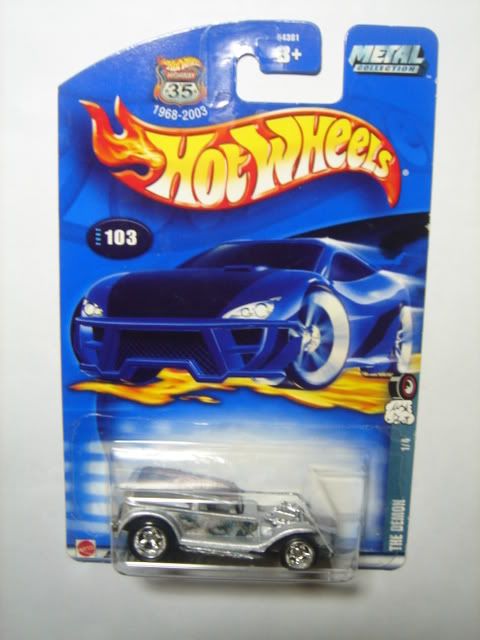
On this post we will tackle painting. If you have prepped the body properly, there shouldn't be too much problem painting. First of all I must let you know this method of painting is using a spray can. I have not used airbrushes, therefore have zero experience in it. :-)

From left to right: Primer, Colour & Gloss Spray Cans.
So, first of all there will be the list of things you need:
1. Paint Primer - Spray Can
2. Paint - Spray Can
3. Gloss/Clear Lacquer - Spray Can
4. Paint Stand
5. Masking Tape (Optional)
6. Hair Dryer (Optional)
7. High grit sandpaper (About 1500 - 2000)
8. Water
9.. Your die cast (Optional... no wait, this is compulsory!) :-P
In this blogpost I will be using pictures from my past customs to illustrate my point.

A Mustang GT die cast on a paint stand.
Right then, first of all you will have a your die cast body stripped of all its paint and sanded smooth. When spray painting you die cast, here are a few guidelines to help you get a nice coat of paint:
1. Spray on a sunny day, you will need the sun to help you dry the paint.
2. Pick an open area, do not spray in an enclosed area where you may be poisoned or spray colour/primer/gloss onto things you did not want recoloured.
3. Heat up the die cast on the paint stand with a hair dryer before spraying the primer. This is to make the paint dry up faster and more evenly, especially in areas that are in the shadow when put under the sun (Thank you Yeo for this tip). Alternatively, you can leave it out in the sun for about 10-20 minutes before spraying.
4. Hold the spray can about 20-25 cm away from the die cast at all times. Your paint on the die cast should be a moderate coat. If you see paint drip/buildup in some areas then your coat of paint is too thick.
5. When spraying, go consistently in one direction (front to back, or vice versa).
6. After a coat of spray, leave it to dry for about 10-20 minutes before spraying the next coat. Make sure your current paint coat is completely dry before spraying on another.
7. After every coat if you find that the paint is uneven, you can smoothen it further by wetsanding the paint. Simply dip your sandpaper into water and gently sand it over the body. Make sure your sandpaper is always wet and your paint coat completely dry. Do not apply a lot of pressure, and only wetsand the paint if it is not your last coat. Usually wetsanding is to smoothen the current coat so that the next coat that goes on top will not carry the same defects.
 Spraying primer upside down.
Spraying primer upside down.
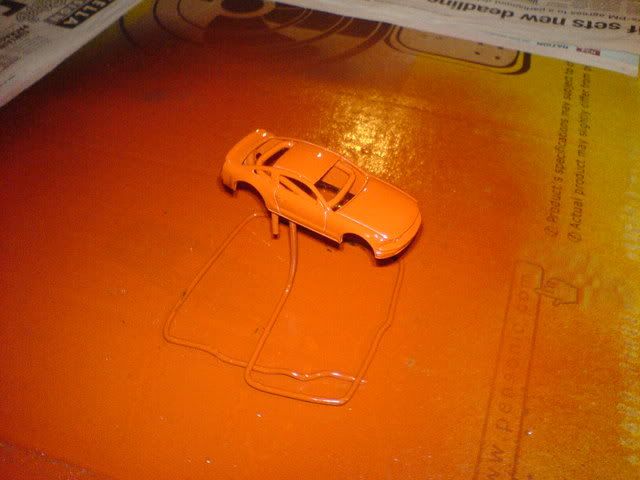
Spraying primer right side up.
When you start spraying, I usually start by turning over the die cast and spraying the bottom first. The spray coat that comes out of the can will coat the die cast from top. The areas curved towards the bottom or facing downwards will not get any paint. So in order to get paint over the areas where the spray cannot reach when it is right side up, I start by spraying it upside down. Then after that I proceed with spraying it right side up.

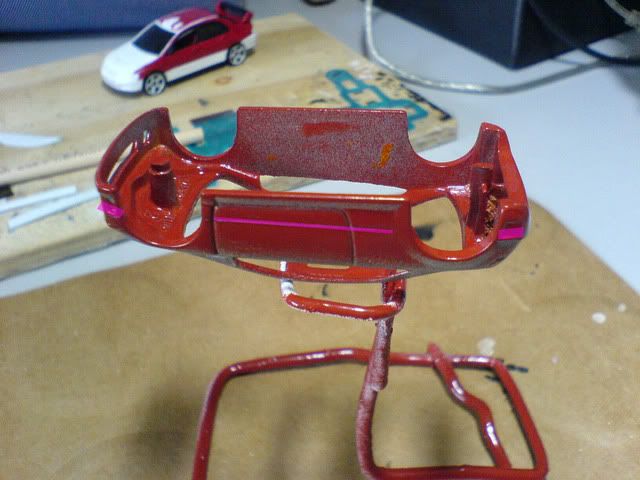
Areas in pink and pointed by the arrow shows the areas the spray will not reach if sprayed right side up. Spraying upside down covers these areas.
Then the same applies for your base colour. Spray one coat upside down, and then proceed with as many coats right side up until the die cast is covered evenly with the colour you chosen. I usually go with two to three coats of paint. The point is to have an even coat of paint all over the die cast without compromising the details on the die cast mould. If your paint is too thick, the details will be covered. Try experimenting with the number of coats if you are painting for the first time to see how many coats is the optimum for you.

Custom Mustang in white after base colour coats.
From here, you can proceed to spraying a gloss (or clear lacquer) coat over the car to protect the paint. For gloss, just one coat is sufficient and there is no need to spray it upside down. You can, but I would suggest you not to.
If you would like to take it to another level, Add a black hood or racing stripes! Right after your base coat, follow up by masking the die cast with masking tape and then spraying one or two coats of paint over the body before glossing. Below are some examples of masking that I have done previously.



Ford Mustang GT racing stripes.


VW Golf GTI's black hood, radiator grills & head lamps.
I know this post is quite long, so if you have any questions along the way feel free to ask in the comments section. Do suggest better methods too if you have discovered some, so we can all learn together! :-)
Happy painting!
Next post: Painting (Interior)Previous post: Pre-paint Preparations (Part 2)








